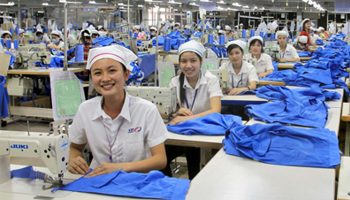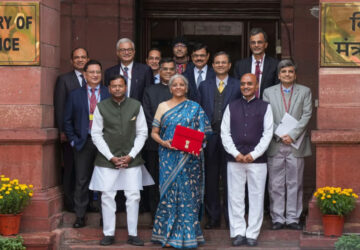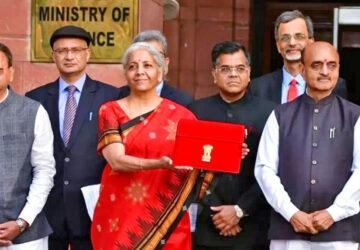 Vietnamese textile and garment companies have turned towards the domestic market and other segments, as well as trying to expand EU market share to compensate for the shortage of export orders. As the Covid-19 pandemic rages on, Vietnam’s textile export turnover down 11.6% in the first 8 months of 2020, said the Vietnam Textile and Apparel Association (VITAS). A further decrease of 10% -15% is expected until the end of the year. Ho Chi Minh City’s textile export turnover was US$3.02 billion in the first eight months of 2020, down 20.4% over the same period. At the same time, US market down 24.16% (29.83% of turnover), European down 24.97% (12.05% of turnover).
Vietnamese textile and garment companies have turned towards the domestic market and other segments, as well as trying to expand EU market share to compensate for the shortage of export orders. As the Covid-19 pandemic rages on, Vietnam’s textile export turnover down 11.6% in the first 8 months of 2020, said the Vietnam Textile and Apparel Association (VITAS). A further decrease of 10% -15% is expected until the end of the year. Ho Chi Minh City’s textile export turnover was US$3.02 billion in the first eight months of 2020, down 20.4% over the same period. At the same time, US market down 24.16% (29.83% of turnover), European down 24.97% (12.05% of turnover).
The number of export orders of HCMC companies down 25% and about 30% in April and May respectively, said the HCMC Association of Garment – Textile – Embroidery – Knitting (AGTEK). The decrease is expected to be 14% – 18% towards the end of the year.
The whole textile industry in Vietnam currently has up to 118.7% of goods in inventory, 20% of the companies were forced to shut down while others cut labour and restructure production activities.
Many global fashion brands declared bankruptcy like New York & Company which owns 378 retail stores and agencies, JCPenney with 850 retail stores worldwide, or Brook Brothers.
The Sustainable Textile of the Asian Region network (STAR network) in April held a meeting with major textile manufacturers from Bangladesh, Cambodia, China, Myanmar, Pakistan and Vietnam, discussing fashion brands and retail systems to consider the aftermaths of their decisions to postpone or cancel placed orders. However, most brands in current circumstances are also suffering from financial decline, with many referring to “force majeure” provisions to suspend their orders.
As a result, Vietnamese textile manufacturers have turned towards the domestic market, with main products including masks, workwear, medical outfits and fast fashion, targeting the cheap or mid-range segment. Domestic consumption is expected to up 5% until the end of 2020, about US$200-250 million.
Nonetheless, the expected 5% increase is nothing compared to Vietnam’s production capacity, and cannot make up for the shortage of export orders, said General Director of the Vietnam National Textile and Garment Group (Vinatex) Le Tien Truong. He also mentioned that the Vietnam-Europe Free Trade Agreement (EVFTA) would allow companies to reach an export turnover of US$7 billion which was that of 2019. About US$5 billion worth of Vietnam’s garment and textile products enter the EU each year, taking up about 2% of the EU’s textile and garment import turnover, while the country ranks 6th worldwide in terms of textile and garment export. Having competitive pricing and fast delivery times will enable Vietnam to take full advantage of EVFTA and increase market share in the EU as well as compete with the Bangladeshi providers, Truong said.
Businesses ought to improve logistical capacity to achieve shorter delivery time, and the government should simplify administrative procedures, reduce clearance and inspection time, he added.
Manufacturers should also start importing materials from countries that have signed FTAs with Vietnam and the EU to take advantage of cumulative rules of origin.
Additionally, they are encouraged to dabble in specialized, hi-tech, multi-detailed textile products or workwear, sports and medical products, while changing production technology, improving management capacity and investing in social and environmental factors.














